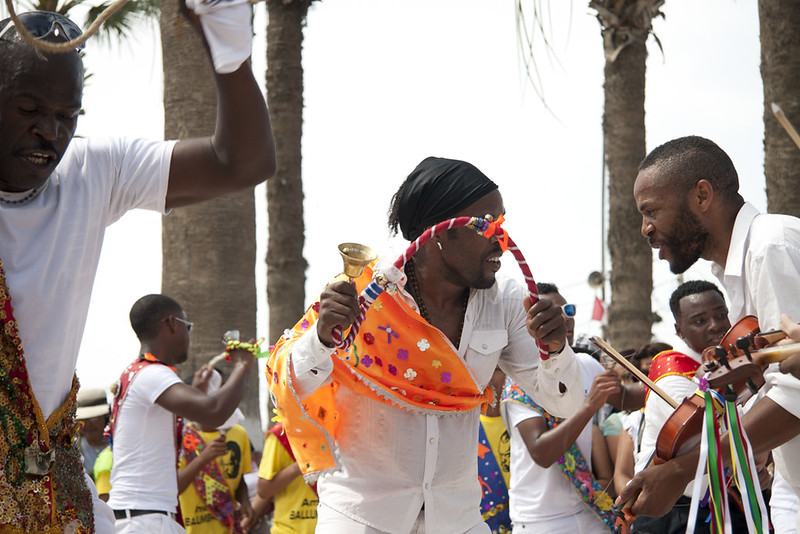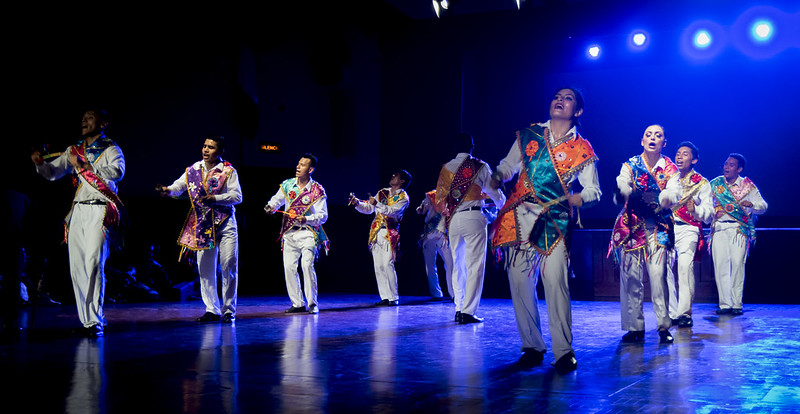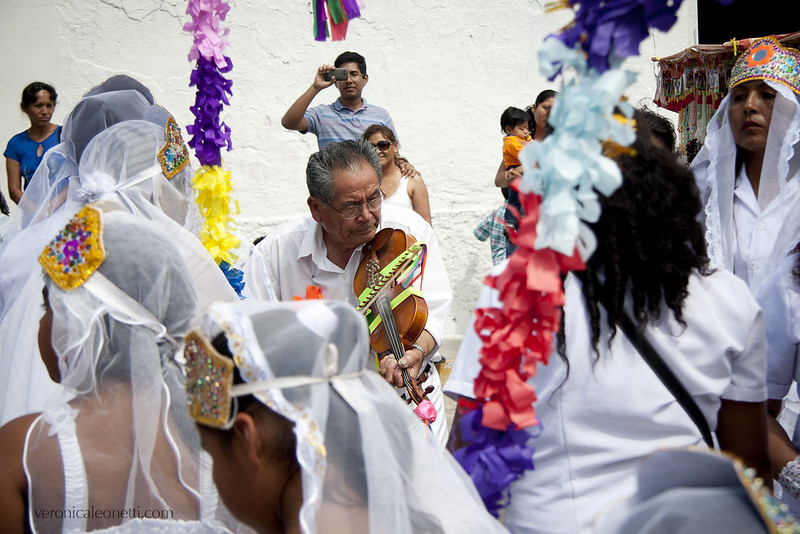‘Hatajo de Negritos’ and the ‘Hatajo de Pallitas’
A Christmas Festival of Rhythm, Faith, and Afro-Andean Heritage in Peru’s Ica Region
2025/12/23 - 2026/01/05
Every December, towns across Peru’s Ica region burst into color and sound for the Hatajo de Negritos and Hatajo de Pallitas festival. Town squares and churchyards fill with the melodies of violins and guitars, the jingling of bells, and the shimmer of embroidered costumes, all set to the rhythmic zapateo (foot-stomping). The Negritos, danced by men and boys, and the Pallitas, danced by women and girls, celebrate the joy of Christmas with a unique blend of Andean, African, and Spanish traditions—making this festival a living cultural treasure where history, music, and faith come together.
Held annually from December 24th to January 6th (Epiphany), the festival welcomes locals, travelers, and families alike. The elegant footwork, choral singing, and homemade Christmas sweets offer a special opportunity to experience Peruvian Christmas with all five senses.
Main Attractions
The Dances of the Negritos and Pallitas
At the heart of the festival are the performances of the Hatajo de Negritos (mainly men and boys) and the Hatajo de Pallitas (mainly women and girls). The Negritos, led by a caporal (leader), form lines in embroidered costumes, carrying bells and whips, and perform zapateo to the sound of violin while singing traditional villancicos (Spanish Christmas carols). The Pallitas sing and dance to guitar, swirling their colorful skirts as they honor the Virgin Mary and the Christ Child.
Key Events
The festivities begin on the night of December 24th with Mass and a reenactment of the Nativity. After midnight, dancers perform in front of the church, then visit homes and neighborhoods, bringing music and blessings. From Christmas Day through Epiphany, the groups parade through town, stopping at nativity scenes and homes to offer song and dance. There are also processions with images of the Virgin and Baby Jesus, culminating in the Epiphany celebration on January 6th.
Costumes and Decorations
The Negritos appear in embroidered jackets and sashes, hats adorned with ribbons and bells, and carry whips and handbells. The Pallitas wear colorful skirts, blouses, shawls, floral headpieces, and sometimes lace veils. Their costumes shimmer under Christmas lights, while the air is filled with incense, the smell of fresh bread, and the dust kicked up by dancing. Town squares and homes are decorated with nativity scenes, candles, and banners.
Traditional Food & Drink
During the festival, families and hosts serve panetón (Peruvian fruit bread), hot chocolate, tamales, and local specialties like carapulcra (a pork and potato stew). The aromas of anise, cinnamon, and roasting meat fill the night air, and the sweet, spicy, and hearty flavors warm dancers and visitors alike.
Cultural and Historical Background
The origins of the Hatajo de Negritos and Hatajo de Pallitas date back to the 17th century, during the Spanish colonial era. At that time, large plantations in southern coastal Peru, especially in Ica, Chincha, and Pisco, brought in many enslaved Africans as laborers. Amid harsh labor and oppression, these enslaved people blended their own music, dance, and spirituality with Catholic Christmas celebrations, creating dances that expressed their longing for freedom and salvation. The use of violin, guitar, zapateo (foot-stomping), singing, and rhythmic movements reflect a fusion of African, Andean, and Spanish cultures.
This tradition continued after emancipation among Afro-Peruvian and mestizo communities, eventually becoming a central part of the region’s Christmas festivities. The dances and songs express not only devotion to the Virgin Mary and Christ Child, but also reverence for ancestors, community bonds, and pride in overcoming hardship. Since the 20th century, local schools and cultural groups have helped preserve the tradition, and in 2019, it was inscribed on UNESCO’s Intangible Cultural Heritage list. Today, the festival stands as a living symbol of Peru’s diverse roots—African, Indigenous, and European—celebrating regional pride and identity.
Participant Voices
When I danced zapateo as a Negrito in El Carmen, it felt like stepping into history itself. The violin’s melody, the sound of bells, and the cheers from neighbors… After the dance, we were invited into a local family’s home for hot chocolate and stories about their ancestors. I’ll never forget the warmth and pride in that room.
Fun Facts
- The zapateo (foot-stomping dance) is a unique blend of African and Andean rhythms, performed in perfect unison by dancers in parallel lines.
- In some towns, practice for the songs and dances begins as early as October in preparation for Christmas.
Festival Dates
The Hatajo de Negritos & Hatajo de Pallitas festival is held every year from December 24th to January 6th in towns across the Ica region, especially in Chincha, Pisco, and El Carmen.
The event schedule is subject to change. Please check the official website for the most up-to-date information.
Information
| Name | ‘Hatajo de Negritos’ and the ‘Hatajo de Pallitas’ |
| Country | Peru |
| Area | Ica, |
| Date | 2025/12/23 - 2026/01/05 |
| Link |
Upcoming Festivals
Dia de la Virgen de Guadalupe Mexico
A Festival Weaving Faith, Fervor, and Mexican Identity
2025/12/11L'Escalade Switzerland
Geneva’s Grand Winter Festival of Courage, Chocolate, and Community
2025/12/12Umkhosi Wokweshwama South Africa
The Zulu First Fruits Festival—A Sacred Celebration of Land, Ancestors, and Renewal
2025/12/12Lucia Festival (St. Lucia's Day) Sweden
A Festival of Light Illuminating the Nordic Darkness
2025/12/15Las Posadas Mexico
The Luminous Quest for Sacred Shelter
2025/12/22Noche de Rabanos (Night of the Radishes) Mexico
A celebration blending art, farming heritage, and cultural traditions
2025/12/23Chant of the Sybil on Majorca Spain
A Medieval Prophecy Echoes Through Majorcan Christmas
2025/12/23‘Hatajo de Negritos’ and the ‘Hatajo de Pallitas’ Peru
A Christmas Festival of Rhythm, Faith, and Afro-Andean Heritage in Peru’s Ica Region
2025/12/24Harbin International Ice and Snow Sculpture Festival China
A Frozen Wonderland Where Art and Adventure Merge
2025/12/24Takanakuy Peru
The Andean Festival of Reconciliation by Fist—How Confrontation Creates Year-End Peace and Bonds


